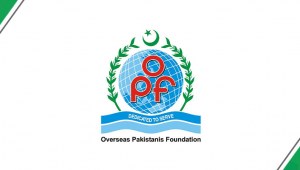KARACHI: Global credit rating agency Fitch has affirmed that Pakistan is making significant progress in restoring its economic stability and rebuilding its external buffers, according to a report released on Friday. The agency highlighted the country’s progress in implementing structural reforms, which will play a crucial role in the upcoming reviews under the IMF program and securing continued financing from multilateral and bilateral lenders.
Fitch noted that the State Bank of Pakistan’s (SBP) decision to reduce policy rates to 12% in January 2025 underscores the success in taming inflation, which fell to just over 2% year-on-year in January 2025, compared to nearly 24% in the fiscal year 2024. This rapid disinflation is attributed to fading base effects from earlier subsidy reforms, exchange rate stability, and a tight monetary policy stance, all of which have subdued domestic demand and reduced external financing needs.
Read: Pakistan’s economic revival impresses IMF: FM Aurangzeb
The report also highlighted that economic activity, having absorbed the effects of tighter policy settings, is now benefiting from the stability provided by falling interest rates. Fitch forecasts a real value-added growth of 3.0% for FY25. The agency also pointed out that credit to the private sector turned positive in real terms for the first time in over two years in October 2024.
Pakistan’s current account has shown a surplus of approximately $1.2 billion (over 0.5% of GDP) during the first half of FY25, driven by strong remittance inflows, robust agricultural exports, and tight policy settings. This represents a significant improvement compared to the deficit recorded in FY24. Additionally, foreign exchange market reforms in 2023 have further supported this positive shift.
Fitch also revised its outlook for Pakistan’s foreign reserves, noting that they are set to outperform previous forecasts. Gross official reserves reached over $18.3 billion by the end of 2024, about three months of external payments, up from $15.5 billion in June 2024. However, the agency cautioned that reserves remain low in relation to Pakistan’s funding needs, as the country faces over $22 billion in external debt repayments for FY25.
Despite the challenges posed by high external debt maturities, Fitch remains optimistic about the country’s ability to manage these obligations. The agency noted that Pakistan has already received significant rollover commitments from bilateral partners, including Saudi Arabia and the UAE, which have extended deposits of $3 billion and $2 billion, respectively.
Read: IMF forecasts Pakistan’s GDP growth to hit 3.2% in FY25
The agency emphasized that securing sufficient external financing remains a critical challenge, especially given the large maturities and existing exposures from lenders. However, it acknowledged that the government’s fiscal reforms, including higher agricultural income taxes, have made progress, even if the January 2025 implementation deadline for some reforms was missed.
Fitch indicated that positive rating actions could be driven by a sustained recovery in reserves, further easing of external financing risks, and successful fiscal consolidation in line with IMF commitments. Conversely, delays in IMF reviews or deteriorating external liquidity could result in negative actions.
Overall, Fitch’s report presents a cautiously optimistic view of Pakistan’s economic trajectory for FY25, affirming that the country is on track to stabilize its economy despite the challenges it faces.
4o mini








